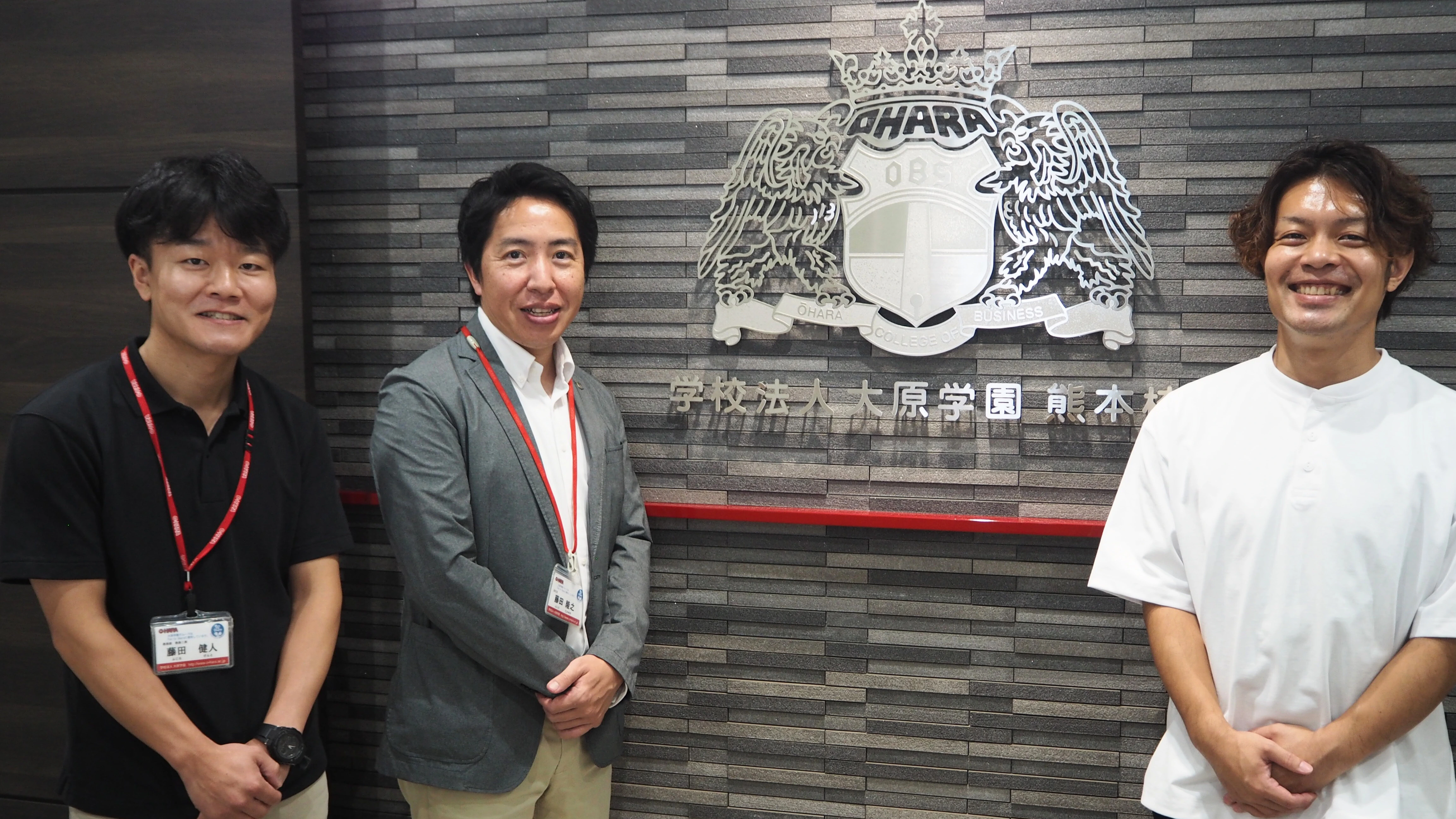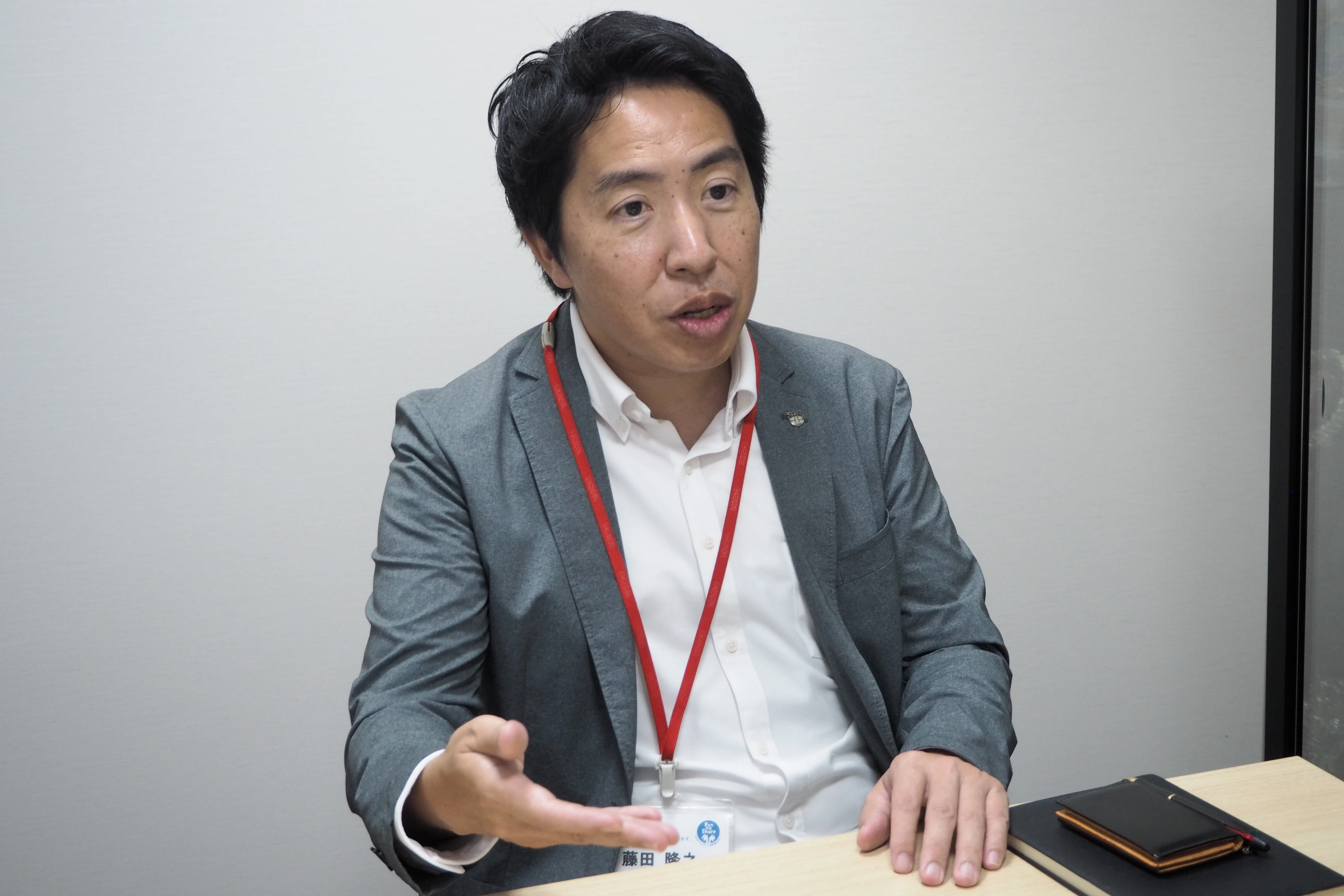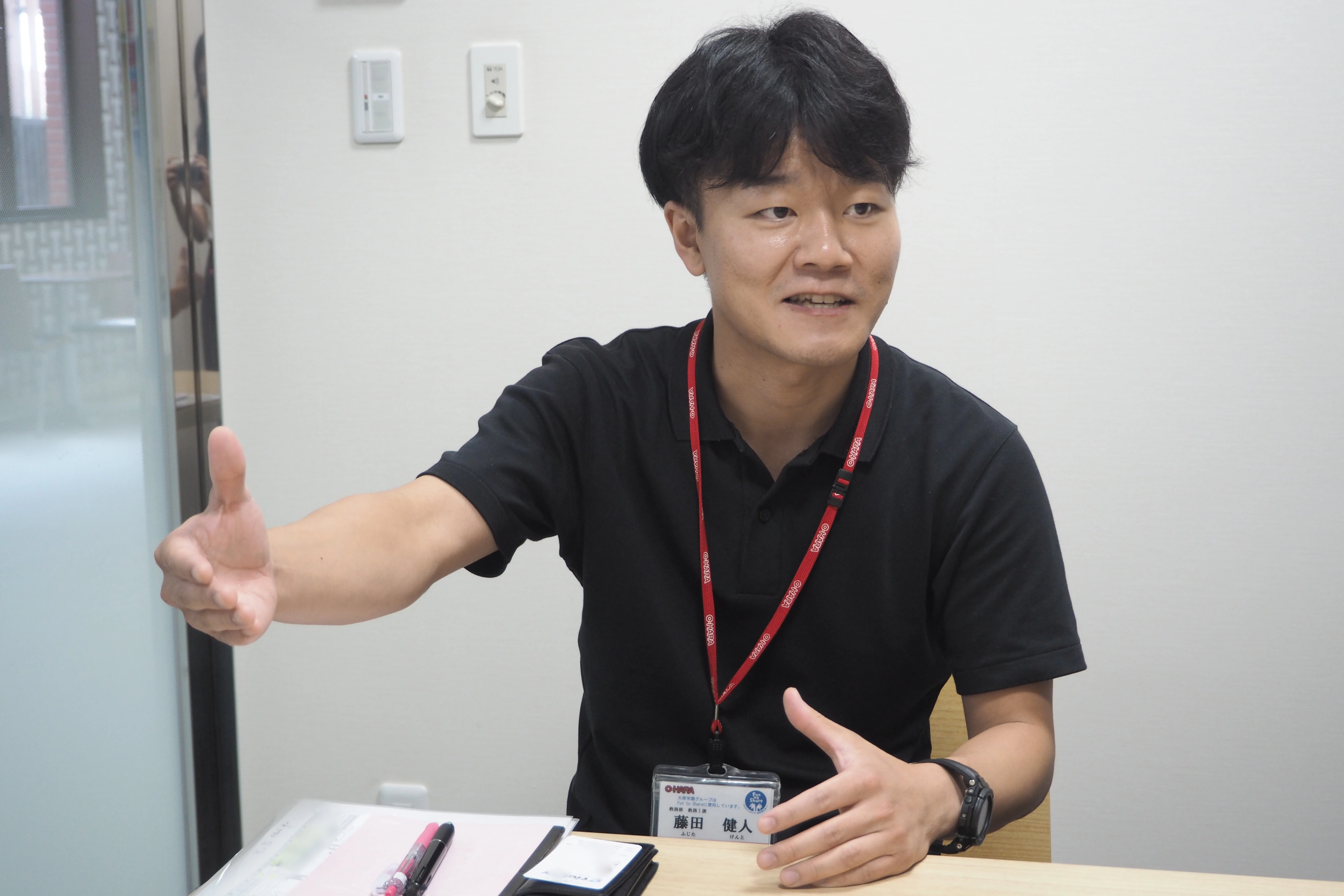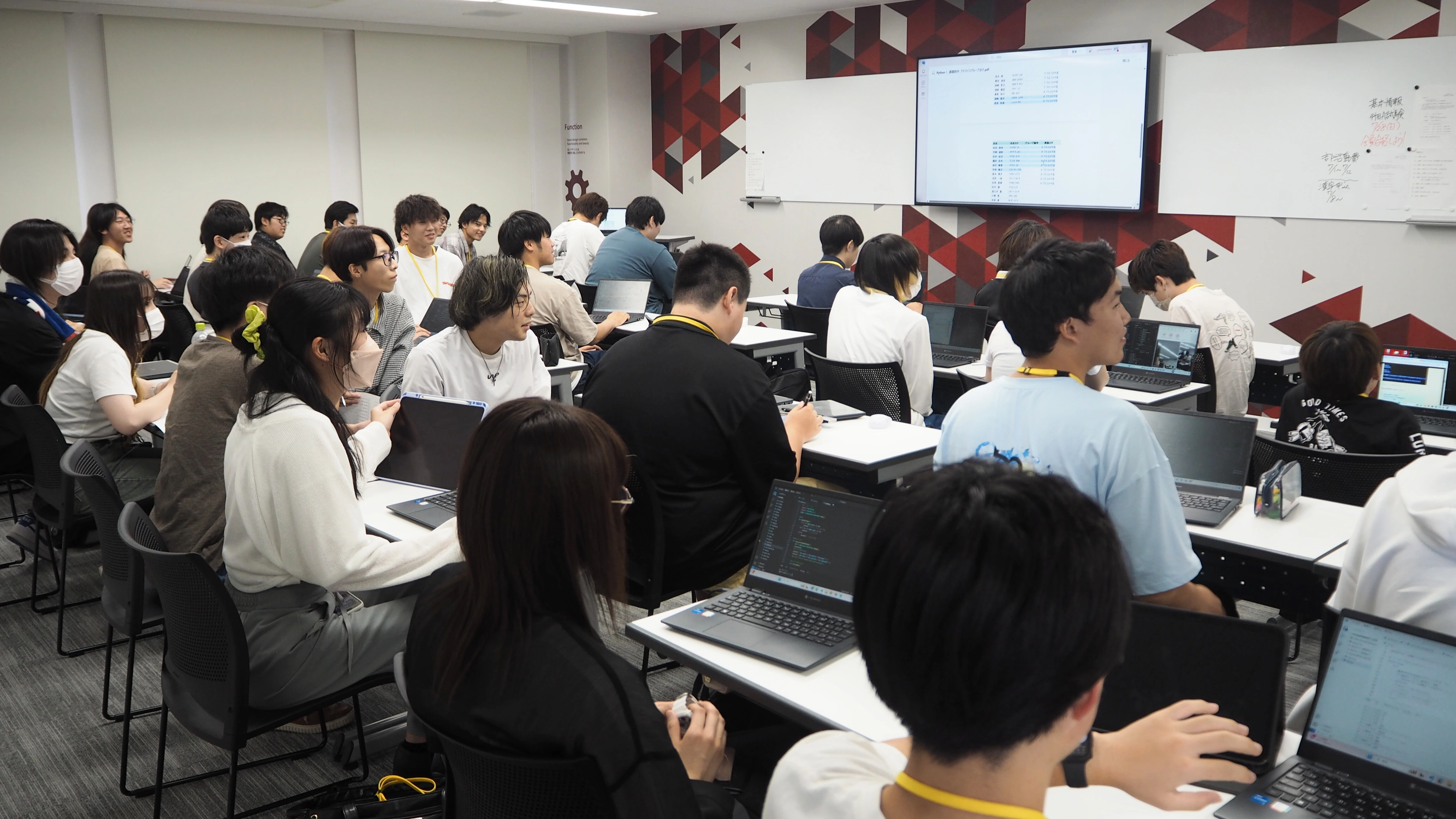Case Study Interview
Ohara Gakuen Kumamoto Campus provides advanced education and a rich learning environment—addressing IT talent development challenges through industry-academia collaboration with local companies.
Ohara Gakuen Kumamoto Campus
Mr. Takayuki Fujita, Vice Principal
Mr. Kento Fujita, Department of Academic Affairs, Section 1

Mr. Kento Fujita (left), from the Academic Affairs Department at Ohara Gakuen Kumamoto Campus; Mr. Takayuki Fujita (center), Vice Principal at the same school; and Mr. Satomi (right), CEO of Fignny
INTERVIEW
Ohara Gakuen Kumamoto Campus undertook a school reorganization to address the shortage of talent in the IT field and to foster human resources for emerging industries such as gaming. As part of this effort, the school was exploring new curricula focused on developing job-ready graduates. One key initiative involved seeking partnerships with IT companies that not only understand the value of education but also share the goal of nurturing talent. This led to the launch of an industry-academia collaborative course inspired by Fignny’s engineer training program. We spoke with Vice Principal Mr. Takayuki Fujita and Mr. Kento Fujita from the Academic Affairs Department about their impressions of the joint course and their commitment to talent development as an educational institution.
Your school is often featured in commercials. Could you tell us again what kind of institution it is?
The Kumamoto campus is the fourth location in the Kyushu area of Ohara Gakuen, a nationwide network of vocational schools, following Fukuoka City, Kitakyushu City, and Oita City. It opened in April 2016. Initially, it consisted of three schools: one focusing on bookkeeping and information processing, one preparing students to become sports trainers or public servants, and another for aspiring nursery teachers, caregivers, and medical clerks. However, responding to current societal needs, we reorganized the school in April of this year. We consolidated existing departments into two: Ohara Business and Public Service College Kumamoto, focusing on bookkeeping, business, and civil service exam preparation, and Kumamoto Childcare, Medical, and Sports College, which covers nursery care, medical office work, and sports training. Additionally, we established the Kumamoto IT Creator College to train talent for the IT industry, which is experiencing a labor shortage due to industrial changes, and for the game industry, which is expected to expand significantly.

Before reaching out to us, what challenges were you facing, and why did you choose Fignny?
Traditionally, Ohara Gakuen’s IT education focused mainly on knowledge-based curricula aimed at acquiring qualifications. Nationwide, we are shifting toward more practical, hands-on programming education. In line with this, we decided to open a new school in Kumamoto. As part of this transition, we are also investing in teacher training and development. However, in regional areas, securing and training instructors is not easy. Meanwhile, Kumamoto Prefecture and City are actively promoting corporate investment. Many companies are considering expanding into Kumamoto, but the biggest challenge they face is securing talent. We felt that by forming partnerships between schools and companies, we could tackle these mutual challenges. While looking for a company that could support us in education, we were introduced to Fignny through XOSS POINT (which houses the Fignny Kumamoto office). We found that Fignny had a deep understanding and strong interest in education and were highly committed to developing human resources. We felt they shared our vision for education and thus wanted to partner with them. That’s why we reached out to them.
Thank you. We’re truly honored. From an educational standpoint, about one-third of our engineers started with no experience, and we also provide training services for companies to develop entry-level engineers. That said, we also hope schools aim to prepare students to be job-ready from graduation.
Yes, as a vocational school, we believe the skills students gain during their enrollment must be as close as possible to what companies expect at the time of hiring. To do that, schools must also invest in training their teaching staff. However, teachers have many responsibilities beyond teaching and usually are not actively working in the industry, so there are natural limits. Therefore, Navigation an educational environment in collaboration with companies allows students to gain practical skills and also gives opportunities to train the teachers who don't have as much exposure to current, hands-on technologies. This dual impact is very meaningful.
So part of the intention was also to help the instructors gain more technical knowledge through company involvement?
Exactly. In rural areas, there are very few IT companies. Even if we want to hire experienced industry professionals as instructors, the industry itself is short on talent, and even fewer are interested in becoming educators. Without qualified instructors, we can’t offer education to local students. To avoid this, we’re building a solid teacher training system for those with some knowledge but little or no practical experience. When companies join us in education, they can not only teach students practical skills but also help improve the knowledge and skills of our teachers. Partnering with companies improves the learning environment for students and helps teachers upskill. It also allows our full-time teachers to focus on post-lesson support and mentoring, something only they can do. For companies, being involved in education provides opportunities to discover and nurture talent, improve employee presentation skills through teaching, and create multiple mutual benefits.
This is a very forward-thinking initiative, and your drive to push it forward is impressive. We’re truly honored to have been involved.

Next, we’d love to hear about the classes themselves. This time, we delivered remote IT training to over 70 students. What were your overall impressions?
The goal of conducting this class was to bring in professionals with real-world experience from external companies, which provided a strong stimulus for the students. It gave students the opportunity to learn from engineers with diverse practical experience—something that regular Ohara instructors alone might not be able to fully convey. This, I believe, significantly boosted student motivation. On the other hand, this was our first attempt at conducting a remote class. Since students are used to having teachers physically present, some had difficulty adjusting at first.
That makes sense. In this case, all the students were in a shared physical space, which posed issues like not being able to turn on their microphones. We tried to address this by sharing a feedback form students could write in freely, and by creating breakout rooms for individual sessions. What did you think of these suggestions, separate from the class content?
We believe it's the school’s responsibility to provide an optimal learning environment, so if there are any suggestions or things we can improve, we’d really appreciate hearing them. With remote work becoming more standard in the IT industry due to the pandemic, we no longer see in-person classes as the default. We want to continue enhancing our online learning environments—not out of resignation due to being in a regional area, but through constructive dialogue. There are things that are possible *because* it’s online, and we’d love to build toward high-quality instruction in that format.
Thank you. One of our strengths is ‘live coding,’ where instructors share their screen and write code in real time. We can observe student reactions while coding, which helps gauge comprehension. This works perfectly online, so we hope to keep incorporating more of that.
We’re truly grateful for suggestions like that. Blended classes that combine in-person and remote students are still very new. I’m sure both sides encounter challenges. But instead of ignoring those issues, we want to actively address them so that we can raise the level of our joint classes to something we can promote proudly. To that end, we hope to maintain and deepen our collaboration with Fignny.
Understood. We will continue addressing any challenges sincerely and providing support as a partner.

Finally, could you share your school’s vision for the future?
In Kumamoto Prefecture, the local government and municipalities are working together to attract businesses. Many companies have already expanded here or are considering doing so. But the biggest challenge is how to secure talent. While bringing in people from other regions or countries is important, ideally, we want to develop human resources locally. Doing so prevents a split in employment opportunities, helps curb depopulation, and contributes to regional economic growth. It’s also a win for companies entering Kumamoto. There are businesses that set up here through government support, but many struggle to hire local staff. Since we operate in Kumamoto, our goal is to build an educational environment in collaboration with local governments and companies—including those expanding here—so that students can gain knowledge and skills on par with those in urban centers and, ideally, find employment locally. We want to build that cycle of talent development through our school. Even if young people leave for Tokyo in search of opportunities, many hope to return home eventually. But if their hometown companies don’t survive, there will be nowhere to return to. To avoid such decline, we want to contribute to helping local businesses remain viable by ensuring a steady flow of talent.
For document downloads and inquiries, please click here
Detailed case studies
not included on this site